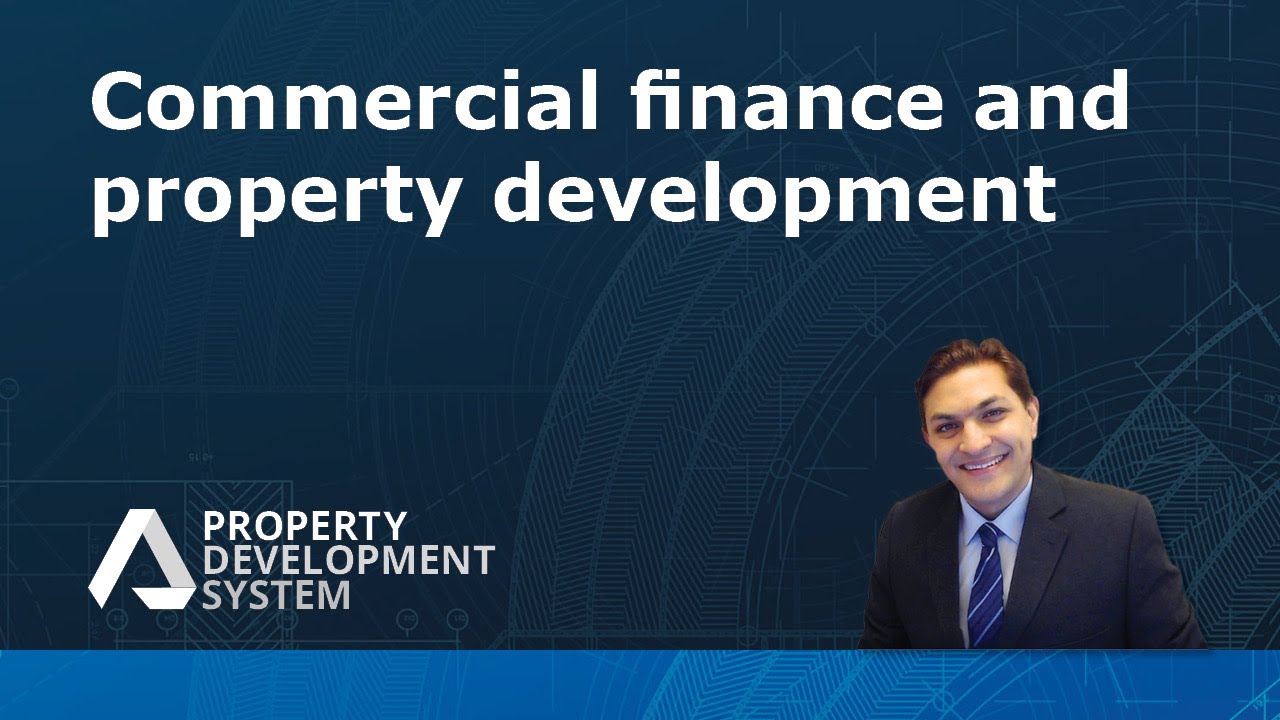Commercial Finance
Here is a comprehensive overview of commercial finance, highlighting the key distinctions between residential and commercial lending practices, particularly for real estate development projects. It elucidates loan value ratios, interest capitalisation, and the significance of pre-sales in commercial loans.
Definition
Commercial finance encompasses banking solutions for businesses, especially beyond residential loan scopes, like developing more than two townhouses.
Loan Value Ratio (LVR)
Generally ranges between 60% to 75% of the Gross Realization Value (GRV) or Total Development Cost (TDC).
Loan Conditions
Includes maximum loan percentages against undeveloped security value, total development costs, and completion valuation, excluding GST.
Interest Capitalization
Common during construction, with some lenders imposing management fees.
Guarantees
Loans are often jointly and severally guaranteed, making all parties fully responsible.
Pre-sales Requirement
Used by lenders to mitigate risk and ensure the market demand aligns with the development.
Insights based on numbers:
- Loans for developments of three or more units typically fall under commercial finance, distinguishing them from residential loans.
- The commercial finance LVR ranges, like 60% against undeveloped security value or 80% against TDC, provide insight into the bank’s risk assessment and the borrower’s equity requirement.
- The transition from 50% to lower percentages in bank acceptance of small-sized apartment loans reflects changing market conditions and risk perceptions.
Frequently Asked Questions
How does the size of the development affect the type of financing required?
For projects involving the development of just one or two dwellings, such as single houses or townhouses, residential loan structures are typically sufficient. However, once a project involves three or more units, or if the developer engages in such projects on a regular basis, it transitions into the realm of commercial finance.
This distinction is crucial because commercial loans have different lending criteria, loan-to-value ratios (LVR), and interest rates compared to residential loans.
For larger developments or regular development activity, engaging with a commercial finance manager becomes necessary to navigate the more complex requirements and obtain suitable financing.
What are the implications of high management fees on the overall cost of a project?
Management fees can significantly impact the overall cost of a project during its development phase, especially in commercial financing contexts. Some lenders capitalize interest when construction starts, but they may also charge management fees, requiring developers to pay a certain percentage of the total drawn amount monthly.
This practice can increase the financial burden on developers, as these fees are in addition to interest payments. The imposition of management fees, therefore, represents an additional cost that needs to be factored into the project’s financial feasibility.
It’s a tactic by some lenders to ensure ongoing revenue during the construction phase, highlighting the importance for developers to carefully consider and negotiate loan terms.
What is Commercial Finance?
Commercial finance is a type of banking service aimed at businesses, offering solutions beyond those found in residential loans. It is particularly focused on projects such as developing more than two townhouses, encompassing a wide range of activities that go beyond what is typical for personal finance.
How does Commercial Finance differ from Residential Finance?
Commercial finance differs from residential finance in several key aspects, including the purpose of the loan, the size and scope of projects financed, and the risk assessment criteria used by lenders. While residential finance typically deals with loans for individual homes or small-scale housing projects, commercial finance covers larger development projects like the construction of multiple townhouses or commercial buildings.
What is a Loan Value Ratio (LVR) in Commercial Finance?
The Loan Value Ratio (LVR) in commercial finance refers to the percentage of a project’s Gross Realization Value (GRV) or Total Development Cost (TDC) that a lender is willing to finance. It generally ranges between 60% to 75%, indicating the portion of the project’s value or cost that can be covered by the loan.
What are the usual loan conditions in Commercial Finance?
Loan conditions in commercial finance typically include specifying the maximum loan percentages against the undeveloped security value, total development costs, and the valuation upon completion of the project, excluding Goods and Services Tax (GST). These conditions help determine the amount of financing available and the requirements for securing a loan.
What is Interest Capitalization in the context of Commercial Finance?
Interest capitalization is a common practice in commercial finance, especially during construction phases. It involves adding the interest that accumulates during the construction period to the principal balance of the loan. This can also include management fees imposed by some lenders.
What are guarantees in Commercial Finance?
In commercial finance, loans are often guaranteed jointly and severally, meaning all parties involved in the loan agreement are fully responsible for the loan. This ensures that if one party cannot fulfill their payment obligations, the other parties must cover the shortfall.
Why are Pre-sales required in Commercial Loans?
Pre-sales are required by lenders in commercial loans to mitigate risk and ensure that there is sufficient market demand for the development project. By securing sales before the completion of the project, lenders can be more confident in the project’s viability and the borrower’s ability to repay the loan.
How do loan conditions reflect the bank’s risk assessment?
The loan conditions, such as the LVR ranges and the percentages against undeveloped security value or TDC, reflect the bank’s assessment of the risk associated with financing a development project. These conditions help the bank manage its exposure to risk by determining the borrower’s equity requirement and the loan’s coverage based on the project’s value or cost.
Has there been a change in the bank’s acceptance of certain types of loans?
Yes, there has been a transition in the bank’s acceptance of loans for smaller-sized apartment projects, moving from 50% to lower percentages. This change reflects shifting market conditions and perceptions of risk, indicating a more cautious approach to financing such developments.
Test Your Knowledge
Multiple-Choice Questions on Commercial Finance
1. What distinguishes commercial finance from residential finance?
A) The interest rates applied to the loans
B) The size and scope of projects financed
C) The requirement for personal guarantees
D) The geographic location of the project
2. What is the typical Loan Value Ratio (LVR) range in commercial finance?
A) 30% to 45%
B) 50% to 65%
C) 60% to 75%
D) 80% to 95%
3. How does the development size affect the type of financing required?
A) Projects with more than two units require commercial finance.
B) Only single-family homes qualify for commercial finance.
C) Residential finance is used for developments of ten or more units.
D) The size of the development does not influence the type of financing.
4. What role do pre-sales play in commercial loans?
A) To reduce the interest rates
B) To eliminate the need for personal guarantees
C) To mitigate risk and ensure market demand
D) To shorten the loan term
5. Which practice is common during the construction phase in commercial finance?
A) Interest reduction
B) Immediate repayment of the principal
C) Interest capitalization
D) Waiving of management fees
6. What does a guarantee in commercial finance imply?
A) Only the primary borrower is responsible for the loan.
B) Loans are guaranteed by the government.
C) All parties are fully responsible for the loan.
D) No personal guarantees are required.
7. Why have banks changed their acceptance of loans for small-sized apartment projects?
A) Increased market demand for larger projects
B) Decreased construction costs
C) Changing market conditions and risk perceptions
D) Higher interest rates for smaller projects
8. How do loan conditions reflect a bank’s risk assessment in commercial finance?
A) By requiring more personal guarantees
B) Through the geographic location of the project
C) By specifying maximum loan percentages against security values and development costs
D) By decreasing the LVR for all projects regardless of size
Answers:
- B) The size and scope of projects financed
- C) 60% to 75%
- A) Projects with more than two units require commercial finance.
- C) To mitigate risk and ensure market demand
- C) Interest capitalization
- C) All parties are fully responsible for the loan.
- C) Changing market conditions and risk perceptions
- C) By specifying maximum loan percentages against security values and development costs
Assignment
Exploring Commercial Finance
Objective
To deepen understanding of commercial finance, its differences from residential finance, and the various factors involved in commercial real estate development projects.
Part 1: Understanding the Basics
Define Commercial Finance
In your own words, summarize what commercial finance is and how it differs from personal or residential finance.
Loan Value Ratio (LVR)
Explain the concept of LVR in commercial finance and why it’s a critical factor for lenders and borrowers.
Part 2: Analyzing Loan Conditions
Comparative Analysis
Compare and contrast the loan conditions in commercial finance with those in residential finance. Focus on aspects such as LVR, interest rates, and loan guarantees.
Impact of Loan Conditions
Discuss how the specified maximum loan percentages against undeveloped security value, total development costs, and completion valuation (excluding GST) influence the feasibility and planning of a commercial development project.
Part 3: Deep Dive into Interest Capitalization and Management Fees
Interest Capitalization
Detail the process and implications of interest capitalization in commercial finance. How does it affect the total cost of a project?
Management Fees
Research and analyze the impact of management fees on the overall cost of a commercial development project. Why might some lenders impose these fees?
Part 4: The Role of Guarantees and Pre-sales
Guarantees in Commercial Loans
Explain the concept of joint and several guarantees in commercial finance. Discuss the potential risks and benefits for all parties involved.
Pre-sales Requirement
Investigate the significance of pre-sales in commercial loans. How do pre-sales mitigate risk for lenders? What impact do they have on the developer’s project planning and marketing strategies?
Part 5: Market Trends and Risk Assessment
Changing Market Conditions
Reflect on the transition from 50% to lower percentages in bank acceptance of small-sized apartment loans. What does this indicate about market conditions and risk perceptions?
Loan Conditions and Bank’s Risk Assessment
Analyze how the loan conditions, such as LVR ranges and percentages against undeveloped security value or TDC, reflect a bank’s risk assessment in financing a development project.
Research Assignment
Choose a real-world commercial development project that has been completed in the last 5 years. Research the project’s financing, focusing on the LVR, interest capitalization, management fees, guarantees, and pre-sales. Present your findings in a report, highlighting how these factors influenced the project’s financial strategy and outcome.
To Do
Prepare a presentation based on your findings from the research assignment. Include insights into how commercial finance principles were applied in the project and any lessons learned that could apply to future projects.
Submission Guidelines
- Complete the assignment in a Word document or PDF format.
- For the research assignment, include at least three sources of information.
- Ensure your presentation is no longer than 10 slides.
- Submit your work via comments or mail.



